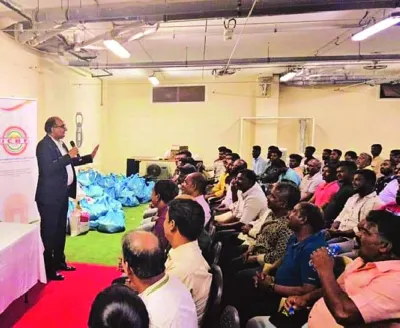The initial public offering of the Maldives Islamic Bank on July 28 has shed a light on an Islamic banking and finance jurisdiction which has been quite under the radar so far — the Maldives, better known for being an exotic and upscale holiday destination, rather than for its banking industry.
The Maldives Islamic Bank is the island group’s first and only Shariah-compliant bank, launched in 2011. It is now getting listed on the Maldives Stock Exchange, with the book building phase for about 7mn shares offered running until September 18. The bank aims to raise $15.8mn, offering a 31%-stake for public ownership.
Islamic banking has only a short history in the Maldives, where Islam is state religion and rooted in the 2008 Constitution which allows only Muslims to hold citizenship in the country. While Islamic finance was first introduced on the archipelago in 2005 through a Shariah-compliant branch of Sri Lankan insurance company Amana Takaful, there was no Islamic bank in the country until 2011 when the Maldives’ government under the administration of then-president Mohamed Nasheed (2008-2012) through the Maldives Money Authority came up with Islamic banking regulations, including for sukuk issuance and Islamic securities screening. In the same year, the Maldives Islamic Bank commenced operations as a joint venture of the Islamic Co-operation for the Development of the Private Sector, a division of the Islamic Development Bank, and the government of the Maldives, meeting strong demand from the 400,000-people population which so far had no opportunity to handle their money matters in a Shariah-compliant matter.
Since demand for Islamic bank and finance services therefore turned out to be substantial, other Islamic finance companies appeared on the market. In 2012, the first-ever Islamic window of a conventional financial institution, HDFC Amna, a unit of the Maldivian Housing Development Finance Corp (HDFC), was introduced to offer Shariah-compliant home financing instruments. Over time, about 13 financial institutions offering Islamic financial services and products emerged in the country, including another Islamic insurance when Allied Insurance Maldives, the largest local insurer, launched an Islamic window, Ayady Takaful, in 2014; as well as BML Islamic, the Islamic window of national lender Bank of Maldives, Bank of Ceylon and Habib Bank, among others.
HDFC was it that issued the first corporate sukuk in the Maldives in 2013 at a volume of $3.9mn, which was followed by a second one in 2017 and a couple of other corporate issuances.
In 2016, the Maldives Centre for Islamic Finance was established as a 100%-government-owned company with head office based in Malé with the purpose to link the Islamic finance industry in the Maldives to international markets. To that end, the government launched a company called Khazana Maldives Limited, widely seen as a replicate of Malaysia’s state investment fund Khazana Nasional Berhad and tasked with operating the centre.
The purpose of the Maldives Center for Islamic Finance is nothing less than to develop the Maldivian banking and finance industry into an Islamic finance hub by providing a roadmap for Islamic finance, as well as product structuring and consultancy services and floating Islamic capital market instruments on the Maldives Stock Exchange. The centre, in co-operation with Thomson Reuters, also issues an annual Islamic finance report which highlights the significant achievements the country has made in the sector within a short period of time.
According to Maldivian finance minister Ibrahim Ameer, the government will further work on improvements in the country’s Islamic finance industry, particularly with the aim of attracting foreign investors to a nation whose economy depends by 30% on tourism, while financial services only make up 3%.
“The government must be economically inclusive. The introduction of Islamic finance by the Nasheed administration was a great step, and there is now increased competition in the Islamic banking sector to move forward,” Ameer said.



